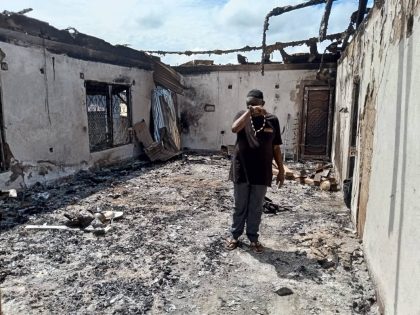Gay in Africa
Two photographers - unrelated - highlight the precarious existence of gay lives on the continent.

By Tadej Žnidarčič.
The Slovenian photographer, Tadej Žnidarčič‘s series of portraits of gay men and women in Uganda is called “Being Gay in Uganda,” They all have their backs turned to the camera. Žnidarčič’s subjects are coy for a reason. Attracting attention can be fatal: “The problem is the way I dress. Everyone is asking, ‘is that a boy or a girl?’ In clubs, when ladies can get in for free, they push us, tell us we are not ladies and that we have to pay. They scream: ‘Is she boy or a girl? Is that man or a woman?’ As tom-boy, everyone looks at you.”
Žnidarčič is one of seven photographers in the “Moving Walls” photographic exhibition opening in mid-March at the Open Society Documentary Project in New York City (and that will travel elsewhere, including hopefully to Uganda). It could not have come at a better moment for those concerned about and campaigning against the growing homophobia on the continent (see, for example, the statement by bloggers posted on this blog and elsewhere yesterday).

Žnidarčič is one of seven photographers in the “Moving Walls” photographic exhibition opening in mid-March at the Open Society Documentary Project in New York City (and that will travel elsewhere, including hopefully to Uganda). It could not have come at a better moment for those concerned about and campaigning against the growing homophobia on the continent (see, for example, the statement by bloggers posted on this blog and elsewhere yesterday). He is also one of two photographers in Moving Walls who focus on gay identity and homophobia on the continent in their work.
The other is Bénédicte Desrus. Her “Persecution of Homosexuality in Uganda” covers events around the Anti-Homosexuality Bill introduced in the Ugandan parliament in October 2009. (The Bill proposes life imprisonment for anyone engaged in homosexual activities and the death penalty for “aggravated homosexuality”).

Closer to home in New York City, a third photographer, Jamaican-born, Samantha Box, covered homeless minority LGBT youth in New York City.

Here are the details for the exhibition.



















